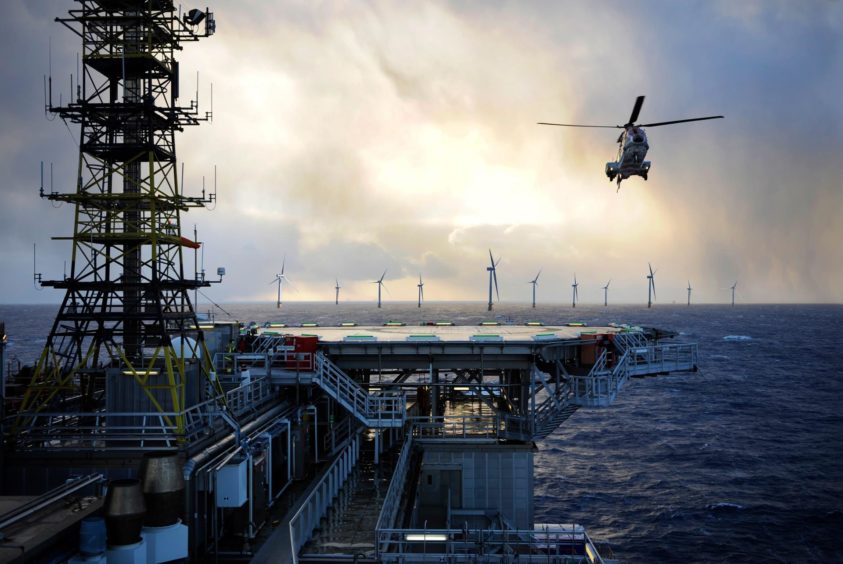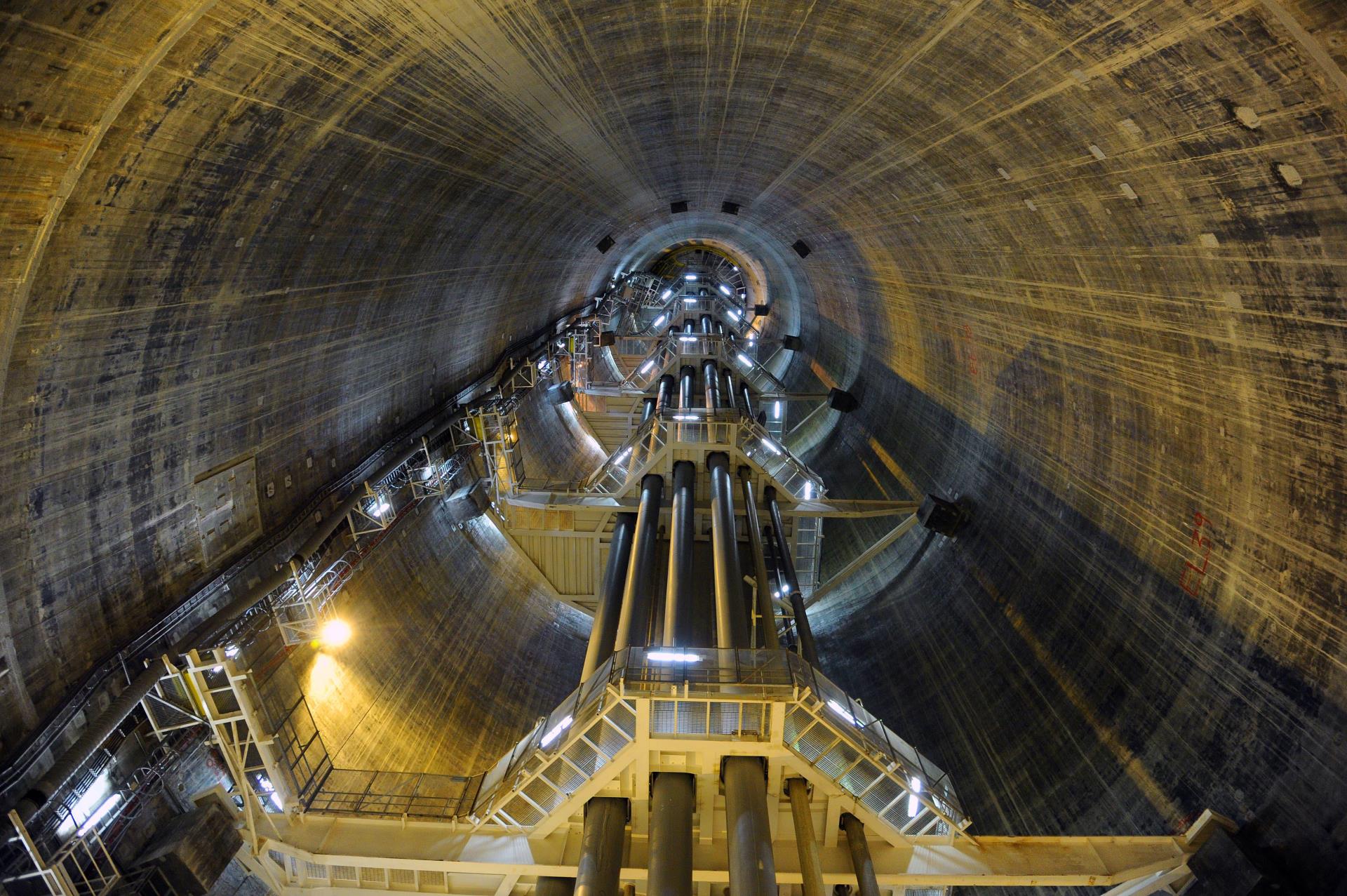
With pressure from net-zero obligations now mounting, coupled with a growing awareness that it has a valuable energy transition role to play, the North Sea oil and gas industry would at last appear to be taking electrification of UKCS infrastructure seriously.
The west of Shetland Orion project covered extensively by Allister Thomas is a case in point.
The UK Atlantic Frontier hydrocarbons prize is still large, with a long life ahead, so it makes sense.
A co-ordinated approach to repowering existing producers and future developments such as Cambo and Rosebank, using green electricity, could deliver considerable cost savings.
The concept of oil platforms taking power from the beach or offshore wind is not new.
And, as is often the case with technology development, the drive has come from Norway, with the fundamentally disinterested UK trailing way behind.
The idea reaches back at least 30 years with two Norwegian operators leading the way, namely Statoil, now Equinor, and Norsk Hydro.
Equinor electrified the Troll A platform in the 90s, while Hydro pioneered two floating turbine concepts, Hywind and Sway.
Equinor continued the work after the two companies merged in 2006.
The first experimental Hywind turbine was commissioned in 2009, then Equinor commissioned the world’s first floating windfarm, off Peterhead, in 2017.
Equinor says the next wind milestone will be to feed the gas turbine-powered Gullfaks and Snorre platforms with green electricity via the Hywind Tampen project, which will be the largest floating offshore wind farm in the world when it begins operating next year.
Powering major oil and gas installations from land is no easy task – the Norwegians are clear about this.
Cross the boundary into the UKCS and the historic situation is very different. No one grasped the nettle in the 90s and the sector is now wonting in terms of emissions reduction.
Given that power accounts for 70% of all offshore oil and gas production emissions, replacing thermal generation with power from renewables is clearly important for realising meaningful cuts to the sector’s GHG emissions.
For years there was jawing but zero substantive action.
Not long after Equinor’s success with Troll A, BP started making noises about possibly repowering its then still flagship Forties field by plugging it into the mains onshore.
This fitted the UKCS operator community which had, since 1993, become besotted with cost-reduction on a grand scale.
They initially concentrated on slashing the capital cost of new developments, later turning attention to butchering operating costs.
On May 31, 2001, at an early industry share fair staged in Aberdeen, Energy Voice came across a BP poster display depicting its future plans for Forties.
Staffers manning the booth said the field was to be redeveloped, a key feature being the addition of a fifth main platform, but there was no mention of future power requirements.
The revamp news was duly broken on June 1 with BP immediately attempting to deny the undeniable. It looked as if Forties was indeed going to be rejuvenated.
But it never happened. In January 2003, BP caught everyone by surprise, selling Forties to Apache.
If the idea of running power cables out to Forties was ever serious in the first place, it died with that sale.
The conversation about wiring UK offshore fields into the mains basically stopped, even in the shallow-water southern gas basin, where it should have been a no-brainer 20 years ago.
The situation today is very different. The global climate change crisis is at last driving talk about powering southern North Sea gas fields using power generated by the burgeoning offshore wind industry and from the beach. The central North Sea offers opportunities too.
The Oil and Gas Authority (OGA) is pushing hard on this, helped by buoyant UKCS hydrocarbon production levels.
Just before Christmas, the OGA submitted before the UK Parliament, its revised strategy which includes for the first time an obligation for the North Sea oil and gas industry to support Britain’s net-zero target.
The strategy addresses electrification of production infrastructure, the regulator having six months ago (August 2020) issued its in-depth Energy Integration Report.
This report warns that platform electrification is both essential for cutting production emissions “near-term” and critical to preserving the industry’s social licence to operate.
The report’s authors have calculated that electrification could abate UKCS operating emissions by 2-3 million tonnes of CO2 annually by 2030.
It is said platform electrification could extend the operating life of existing assets and achieve cost efficiencies in the development of fields.
But to get anywhere near the 2-3m tonnes reduction requires that the industry gets serious and delivers two electrification projects by 2025.
OGA says the most significant opportunities are:
• Windpower supply and transmission link with the mainland enabling electrification of new oil projects west of Shetland.
• Existing facilities in the outer Moray Firth could be electrified through connection to wind power developments in the area.
• Electrification of central North Sea platforms at a greater distance from the UK coast could potentially benefit from a cross-border power supply from Norway.
• Several cross-industry opportunities in the southern North Sea, due to closer proximity between wind farms and gas operations.
The OGA clearly has a grip on the issues and is working assiduously to lead the North Sea horse to water, but will the horse actually comply?
Mature UKCS assets change hands frequently compared to Norwegian ones.
Small operators and their investees are looking for a fast-buck for the least expenditure possible.
Major oil companies, especially BP and Shell, have historically dominated activity on the UKCS and, while they continue to have a major North Sea presence and therefore influence, as the industry has matured, the corporate landscape has become increasingly fragmented, with more than 100 companies now holding acreage.
While the OGA believes the industry has the skills, infrastructure and capital to help unlock net zero, short-termism poses a potential threat. However, it seems the big operators are on board.
Analysts at Wood MacKenzie are optimistic too. They see electrification of offshore platforms as the “frontrunner” as it not only improves production efficiency, it also cuts maintenance costs.
However, in a report prepared for the Oil and Gas Technology Centre (OGTC) last year, WoodMac warned platform electrification would add considerable complexity to the now fast-growing North Sea offshore power grid.
But it sees a golden opportunity too: “Integrating offshore wind developments with existing and planned offshore oil and gas operational power demand via interconnected infrastructure could enable the critical electrification of oil and gas installations, while at the same time facilitating stable low-carbon electricity supply to the National Grid.”
UK emissions from oil and gas production are the highest in Europe, reaching 13.1m tonnes of CO2 in 2019, according to Rystad Energy emission data. Extraction emissions account for 10.1m tonnes of CO2, with flaring making up the rest.
By comparison, Norway’s total emissions from oil and gas operations reached 10.4m tonnes of CO2 and Denmark’s 1.4m tonnes in the same year.
Rystad forecasts UKCS production will rise over the next several years and peak at 2.09m barrels of oil equivalent (boe) per day in 2035, up by about 25% from 1.64m boe for last year.
According to Rystad analyst Olga Savenkova: “There is significant room for improvement when it comes to reducing carbon intensity on the UKCS.
“We already see that priorities are shifting toward greener solutions from both sides of the decision-making process, and many operators and investors are now including an additional carbon cost in their capital allocation decisions.”
With COP 26 – the United Nations’ climate change conference – due to convene in November in Glasgow, the North Sea industry will be extra keen to impress.
But will it adhere to its pledges? That is the multi-billion dollar question.
Recommended for you

 © Supplied by Equinor Photo credit
© Supplied by Equinor Photo credit